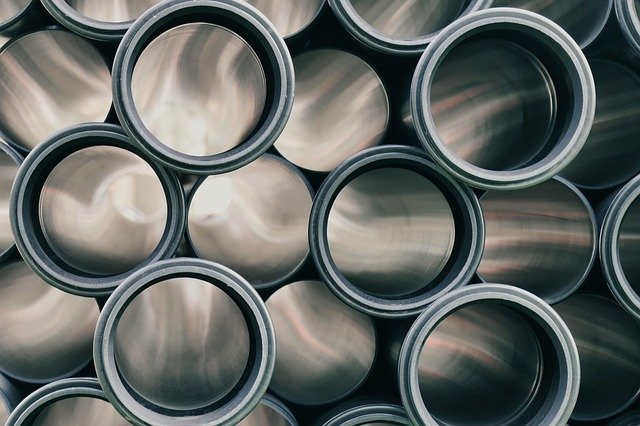Discover Welding Training Opportunities Available in Australia
Welding training offers individuals in Australia a pathway to exciting career prospects. With no prior experience or educational prerequisites necessary, this program opens the door to one of the most dynamic and in-demand fields. Participants can gain hands-on skills and knowledge, preparing them for a rewarding professional journey in welding.

Exploring the Benefits of Welding Training in Australia
Formal welding training in Australia delivers multiple advantages for career seekers. Professional certification increases employment opportunities across various industries where skilled welders remain in consistent demand. Training programs are designed to provide comprehensive knowledge of different welding techniques including MIG, TIG, and stick welding, along with understanding metallurgy principles and safety protocols essential to the profession.
Australian welding qualifications are internationally recognized, allowing certified welders to pursue opportunities both domestically and abroad. This global recognition stems from Australia’s adherence to strict welding standards aligned with international requirements. Additionally, the hands-on training approach ensures graduates develop practical experience alongside theoretical knowledge, making them job-ready upon completion.
Many welding courses also cover specialized areas such as underwater welding, pipe welding, or structural welding, allowing students to develop expertise in high-demand niches where specialized skills command premium compensation.
Understanding the Requirements for Welding Courses in Australia
Entry requirements for welding courses in Australia vary depending on the qualification level. Certificate II courses typically have minimal prerequisites and serve as entry points for beginners, while more advanced qualifications may require prior experience or completion of lower-level certificates.
Most training providers require students to have completed Year 10 education or equivalent for entry-level courses. For advanced qualifications like Certificate IV or Diploma programs, students typically need to have completed Certificate III or demonstrate equivalent industry experience. English language proficiency is also necessary, with specific requirements varying by institution.
Physical requirements should be considered, as welding is a hands-on trade requiring good hand-eye coordination, spatial awareness, and reasonable physical fitness. While no formal fitness assessments are typically required, students should be aware of the physical nature of the profession.
For apprenticeship programs, candidates must secure employment with a host employer before enrollment. These programs combine on-the-job training with classroom instruction, typically lasting 3-4 years for welding trades.
Career Opportunities Available After Completing Welding Training
Qualified welders can pursue diverse career paths across multiple industries in Australia. The construction sector employs welders for structural work on buildings, bridges, and infrastructure projects. The mining industry requires welders for equipment maintenance and infrastructure development, often offering higher-than-average salaries, particularly for fly-in-fly-out positions in remote locations.
Manufacturing remains a significant employer of welding professionals, with opportunities in automotive, aerospace, shipbuilding, and general manufacturing sectors. Defense industries also seek skilled welders for shipbuilding, aircraft maintenance, and equipment fabrication, with projects like submarine construction creating substantial demand.
Career progression opportunities include advancing to specialized roles like welding inspector, supervisor, or trainer. With additional qualifications, welders can move into welding engineering or quality assurance positions. Some experienced professionals establish their own businesses, offering specialized welding services to various industries.
Choosing the Right Welding Training Program
Selecting the appropriate welding training program requires consideration of several factors. Prospective students should verify that training providers are registered and that qualifications are nationally recognized. Course content should align with industry standards and cover relevant welding processes for their target career path.
Facility quality significantly impacts training effectiveness. Workshops should be equipped with modern welding equipment that reflects current industry technology. Student-to-teacher ratios impact learning outcomes, with smaller class sizes typically offering more personalized instruction.
Industry connections are valuable indicators of program quality. Programs with strong industry partnerships often provide better work placement opportunities and employment pathways. Reviewing graduate employment rates can provide insight into a program’s effectiveness and industry reputation.
Flexibility may be important for those balancing work or other commitments. Some providers offer part-time, evening, block release, or online components to accommodate diverse scheduling needs.
Welding Training Providers and Course Options
Australia offers numerous pathways for welding education through different types of training providers. Each option presents distinct advantages depending on individual circumstances and career goals.
| Training Provider Type | Course Offerings | Key Features |
|---|---|---|
| TAFE Institutes | Certificate II to Advanced Diploma in Engineering (Welding) | Government-subsidized, industry-recognized, extensive facilities |
| Private RTOs | Specialized welding certificates and skill sets | Flexible scheduling, specialized niche training, often faster completion |
| Apprenticeship Programs | Certificate III in Engineering (Fabrication Trade) | Earn while learning, extensive hands-on experience, employer connections |
| Industry Associations | Short courses and specialized certifications | Advanced techniques, upskilling opportunities, industry networking |
| University Pathways | Advanced Diplomas leading to Engineering degrees | Academic progression, theoretical depth, engineering career preparation |
Financial Considerations for Welding Training
The cost of welding training in Australia varies considerably based on qualification level, provider type, and eligibility for government subsidies. Certificate II programs typically range from $1,500 to $4,000, while Certificate III qualifications (often completed as part of apprenticeships) can cost between $3,000 and $8,000 for full-fee students.
Apprenticeships offer financial advantages as they provide income while training, with employers covering most training costs. Government subsidies through programs like JobTrainer can significantly reduce fees for eligible students, sometimes by up to 70%.
Equipment costs should also be factored into budgeting decisions. While training facilities provide essential equipment, students typically need to purchase personal protective equipment (PPE) including welding helmets, gloves, and safety boots, representing an additional investment of $300-$800 depending on quality.
Prices, rates, or cost estimates mentioned in this article are based on the latest available information but may change over time. Independent research is advised before making financial decisions.
Conclusion
Welding training in Australia offers structured pathways to rewarding careers across multiple industries. The combination of theoretical knowledge and practical skills development prepares graduates for immediate employment opportunities and long-term career advancement. With strong industry demand, internationally recognized qualifications, and diverse specialization options, welding represents a viable career choice for those interested in skilled trades. By carefully selecting appropriate training programs and taking advantage of available financial support, aspiring welders can successfully enter this enduring and essential profession.




